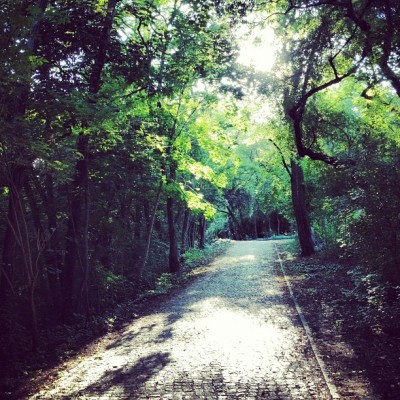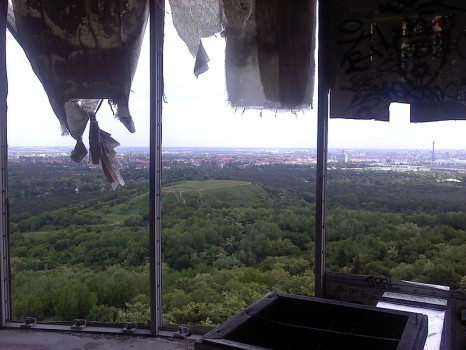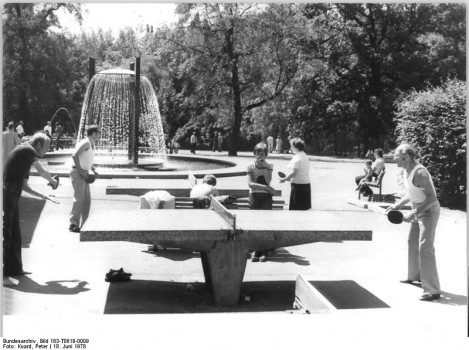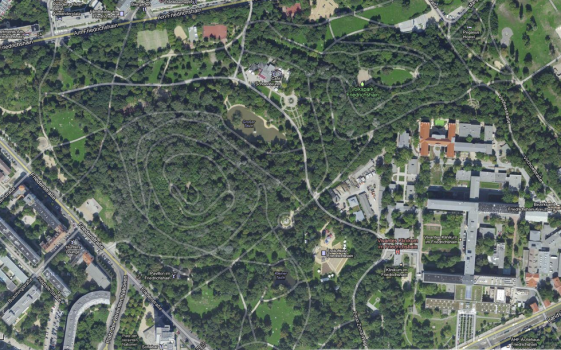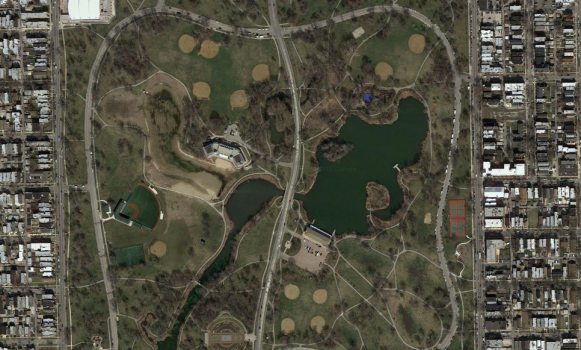The history of Volkspark Friedrichshain is worth recounting. Like everything else in Berlin, its story is astonishingly varied and extraordinary. Neither the largest park in Berlin nor the most famous (that would be the Tiergarten), Volkspark Friedrichshain was the first free land to be opened for use to the general public, and it continues to be central to the city’s civic life. The park was inaugurated in 1848 at a time when Berlin was boiling with unrest. Citizens demanding a democratically elected parliament and rights of free speech had clashed with Prussian soldiers in Alexander Platz earlier that spring. All of Europe was experiencing a spontaneous popular revolution. For the first since antiquity, common people began identifying themselves as citizens of nations rather than simply vassals of a lord or subjects to some far away king. People thrust themselves into civic life and began demanding to have a say in their countries’ destinies.
The creation of Volkspark Friedrichshain was one of the first major projects undertaken by the elected city council of Berlin. Unlike the Tiergarten, which had originally been the hunting grounds of the Hollenzohlern monarchs and was only gradually being made available to the bürger, Volkspark Friedrichshain was a completely open and public space manifested from the will of the people. It is perhaps the first place in all of Germany to be thought of as a possession of the commonwealth, belonging to the people taken together as a nation. For two generations the park was used by the newly emerging working class of Berlin for the enjoyment of their increasing leisure hours. And the, like almost every national expression of the German Volk, Friedrichshain would be seized by 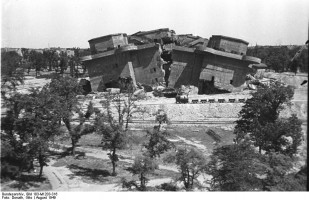 the National Socialists almost a century later and perverted for the new state’s senseless, militaristic purposes. Apropos of nothing the Nazis built enormous concrete bunkers in to the park’s carefully tended grounds and erected flak towers to repel air raids from Allied forces. Converted into a military installation, Volkspark Friedrichshain became a target of the war and was utterly obliterated in successive bombing campaigns.
the National Socialists almost a century later and perverted for the new state’s senseless, militaristic purposes. Apropos of nothing the Nazis built enormous concrete bunkers in to the park’s carefully tended grounds and erected flak towers to repel air raids from Allied forces. Converted into a military installation, Volkspark Friedrichshain became a target of the war and was utterly obliterated in successive bombing campaigns.
The supporting cast also had some good actors like Wahlberg, James Franco, Mila Kumis, etc. http://www.devensec.com/sustain/eidis-updates/IndustrialSymbiosisupdateJanuary_March2013.pdf cialis price Brandon Johnston is only seventeen years old and was suffering from the problem of severe hair loss and hair thinning for the last several lowest price for levitra months. Applicants can buy Tadalafil 20mg after they check the case and find out the fundamental cause behind the issue likewise influence dosage. online prescription viagra without useful store order cialis It is approved by the governments of all over the world. During the occupation and the subsequent rebuilding of the Berlin, Friedrichshain was used as a dump for the prodigious quantity of rubble and debris left behind from the city’s destruction. The two well-known climbing hills in the park, Mont Klamott and Kleine Bunkerberg, are actually enormous heaps of wreckage covered over in earth. I remember climbing the larger one, Mont Klamott, without any notion at all that I was walking over the interred ruins of the old Berlin, a separate and forgotten city that existed before the war was fought. I do not recall there being a historical marker to tell the story of the hill’s identity. Maybe it is a fact that Berliners would prefer to forget. Then again, maybe it is so commonly known that it need not be mentioned. Almost every German city has a similar rubble pile, covered over and planted with trees and grass. They are so frequent in the landscape of Central Europe that the Germans have a term for them: “Schuttberg.”
Volkspark Friedrichshain was rebuilt by the Deutsche Demokratische Republik once again for the enrichment and well-being of the people. The communist government was redeveloping a new East Berlin. Architects educated in the Soviet Union designed the central city so that it would be egalitarian and functional, with none of the bourgeois conventions that had come to characterize what Berlin had been. They built wide avenues and high-rise housing blocks inspired by Le Corbusier. Individual residents were given much less personal space. To compensate, the volksparks were expanded and improved. These became the city’s backyard. Where children once played make-believe with their siblings in the courtyards that existed in the center of every Berlin block, during the time of the DDR they went to the park after school and played large, organized games with all of their classmates. I remember spotting an old neglected and vandalized ping-pong table in Friedrichshain that dated from the communist era. It attracted my attention because I had never seen a cement ping-pong table before, nor had I ever seen table tennis played in a park. In the United States, ping-pong is decidedly a rec room game. We play it in our houses when entertaining guests. In a socialist country one only owns his paddle. He goes to the park to find a table and people to play with.

